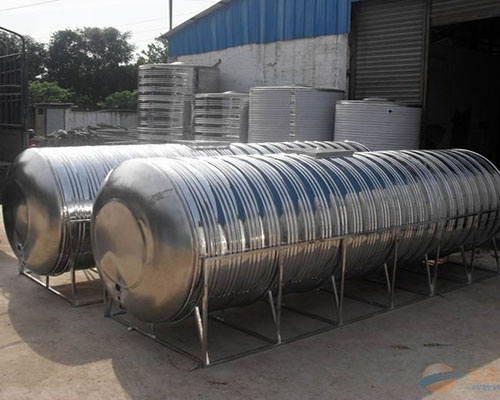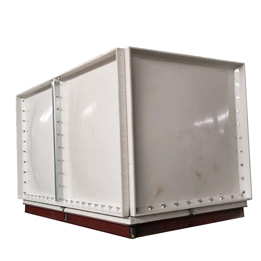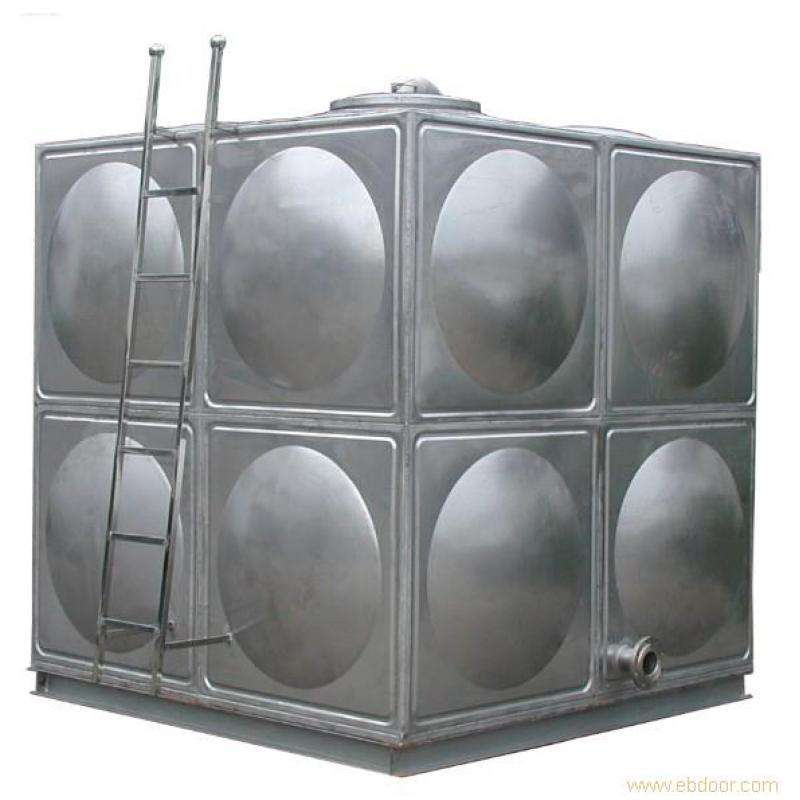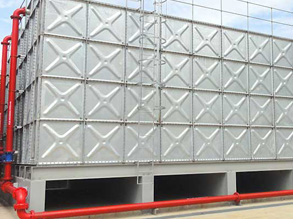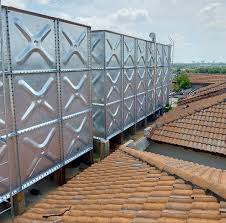Why do we need to store water?
One of the most common question you might wonder specially if you are just beginning your preparation towards saving water is why do we need to store water?
This concern, you might be, for the meantime, will take it for granted, for the fact that water will just come out from your tap or from various faucets in your home. Nevertheless, when emergencies, disasters, or unexpected circumstances will happen causing contamination to the water supply in your community, then this would be the moment which you should prevent.
According to U.S. Geological Survey, below is a list of the Typical Water Use at Home based on the estimate that each person uses about 80 to 100 gallons of water per day.
1. Bath
Consumption: Bath tubs varies in size but in average, 36 gallons is the usual amount of per person per day.
Water conservation tip: Simply taking a quick shower instead of a bath in a tub can save enough water daily.
2. Shower
Consumption: Using new water-saving shower heads can make you save about 3 gallons per minute from the usual 5 gallons per minute of consumed water using an old model shower heads.
Water conservation tip: In addition to installing water-saving shower heads, setting in a low-flow and shorter time of shower can result to more water saving at your home.
3. Teeth Brushing
Consumption: Brushing teeth can only consume less than a gallon of water per person.
Water conservation tip: Aside from simply turning off the faucet while brushing teeth and just turn it back on when you needed to rinse, installation of new water-saving faucets can push to save more water to at most 50%.
4. Hands/face washing
Consumption: Washing your hands or face in various time of the day at home can consume an average of 1 gallon per person.
Water conservation tip: Just make sure to immediately turn off the water in the faucet when you are already drying your hands or still putting soap on it. Just turn it on when you are rinsing.
5. Face/leg shaving
Consumption: The same as with washing your hands, washing your legs or face in various time of the day at home can consume an average of 1 gallon per person.
Water conservation tip: Just make sure to immediately turn off the water in the faucet when you are still shaving your legs. Just turn it on when you are rinsing.
6. Dishwasher
Consumption: Considering the 3-meal a day routine, with average number of dishes being washed, will sum up to 6 to 16 gallons per day of water consumption.
Water conservation tip: Newer model of dishwashers requires less water than the old ones. If you want to save water, try to be keen on your machine's water usage and performance.
7. Dishwashing by hand
Consumption: Dishwashing by hand will all depend on the washer's efficiency in using water and your faucet's performance which comes up to an average of 8 to 27 gallons per day.
Water conservation tip: Dishwashing techniques can be practiced like scraping food off prior to using water then soaking the dishes first in a basin to make hard and sticking food soften before putting soap and rinsing. In addition, you can use aerator in your faucet to control the flow of your water.
8. Clothes washer
Consumption: Most newer model washing machines will only require 25 gallons per load while older models will reached up to 40 gallons per load.
Water conservation tip: Be keen to choose the type of washing machine to use in your home. Choose that one where you can save water and electricity at the same time.
9. Toilet flush
Consumption: Newer toilet models consumes 1.6 gallons per flush which is more than 3 gallons of water savings from old models. If you use and flush often daily then it means you consume more water per day.
Water conservation tip: Only flush toilet when needed and avoid unnecessary flushes. Also, checking on leaks will help save water.
10. Glasses of water you drank
Consumption: If you are quite conscious of your health then you can consume an average of 8 glasses containing 8 ounces of water per day. This will give an average of around 2 liters per person per day.
Water conservation tip: The more water you drink the better, just make sure that you drink the water in the glass and never just throw some of it.
11. Outdoor watering
Consumption: Depending on the size of your lawn but in an average rate, outdoor watering can consume 2 gallons of water per minute.
Water conservation tip: Try to use some alternatives like rainwater catchment, which is also one of the best way to store water, where using rainwater to use on your outdoor watering rather than the direct water coming from your paid water supply.
How long can you store water?
Aside from storing commercial bottled water, it is possible to store your own water from the tap in a clean and secure water containers like glass, enameled metal, or fiberglass containers as recommended by the Federal Emergency Management Agency(FEMA). For emergency purposes, per household, you must store at least 3 gallons of water per person to survive for 3 days without water supply.
In connection on the quest on how to store water for emergency, FEMA further recommends to discard plastic bottled water in two weeks age after it was open. This targets mainly on the drinking purpose but you can use it for watering your plants if it's no longer potable.
Here are some tips for you on how to store water for emergency as recommended by Centers for Disease Control and Prevention (CDC):
1. Store at least one gallon of water per day for each person and each pet. For hot climates, considering storing more amount of water specially on family members who are sick or is pregnant.
2. Store at least for the course of 3 days survival for each person and each pet. If possible, try to store a 2-week supply.
3. If you are storing store-bought bottled water, observed the expiration date. Otherwise, if you are storing water directly from your tap, replace the water every 6 months of storage which is a big consideration on how to store water long term.
4. To be used for general sanitizing and cleaning, try to store a disinfected water by using an unscented liquid household chlorine bleach with label that should say 5-6% and 8.25% content of sodium hypochlorite.
What is the Best Way To Store Drinking Water at Home?
Storing water for drinking and cooking is a crucial thing in the entire survival process. Careful research should be done on how to do it efficiently and safely.
According to PennState Extension, this procedure is simple with full consideration that the water you are storing is not contaminated. However, you should follow some guidelines to do it:
Method A
If you are storing water from your water provider which is already disinfected, you can directly store the water through milk jugs or used soda bottles with secured screw-on tops. This could be one of the cheapest way to store water. To do it, follow the direction below:
1. Thoroughly wash milk jugs and soda bottles with warm water and soap. Choose only containers with secured screw-on top.
2. Sanitize the containers by mixing one teaspoon of household liquid bleach in one gallon of water. Pour the solution into each container and leaving it for at least two minutes. Pour out the sanitizing solution from the container. Rinse the container with potable drinking water.
3. From the water directly from your faucet, fill in your containers. Cap it tightly and label it with "Drinking Water" and the date when you store it.
4. Locate a dark, cool, and dry place where you store the sealed containers with water.
5. If you have not used the stored water within 6 months, empty the containers and replace the store water using the same procedure.
Method B
If the water supply in your area is contaminated and is not safe for drinking, you have the option to purchase bottled water from stores. Grocery stores and local discount stores ahas their own and is connected with water depot having an own purifying and water store equipmentwhich is gives you assurance and less hassle.
To save money, you may directly purchase from purified water storecompanies in large containers rather than in small bottle sizes.
On the other hand, purifying water at home for drinking comes in few methods too. Prior to the two listed methods below, you should first identify if the water coming from your faucet has visible particles according to one published article of Pennsylvania State University. If there is, you should let the particles settle down at the bottom for few hours, then strain the water using a clean cloth before disinfecting. This is the process of filtration which you should consider first before going into any water disinfection method.
Here are the Two Methods to Purify Water for Drinking:
1. Boiling Method
Boiling is a natural and good way to purify water for drinking. To do it, you only need to boil water for 1 to 3 minutes. Let cool the boiled water. Once cooled, you can now fill it in your prepared container using Method A as mentioned above.
Sometimes, boiled water has different taste but it will taste better if you are going to put oxygen back in it before drinking. To do oxygen restoration, simply prepare two glasses and our the water back and forth in both glasses several times.
2. Liquid Bleach Method
You can use a regular household liquid bleach in this procedure to disinfect water. Avoid bleaches that are scented, having added cleaners, and colorsafe.
With the regular liquid bleach having 5.25% hypochlorite, add 16 drops (or about 1/4 of a tea spoon) on each gallon of water.
You should mix thoroughly the treated water and allow at least 30 minutes before using it. This procedure is a success if you see that the water have a slight bleach odor.
After doing the purifying process, fill the purified water in your prepared containers as instructed in Method A earlier.
Where do we store water?
In general, storing water for emergency and long term use is highly recommended for you to have a grp tank at home. Grp water tankcan store directly the water supply coming from your faucets.
Out of the things used to store water, stainless steel water tank is the best option to avoid other issues in your stored water even if it will stand for 6 months. While for drinking purposes, further process can be considered just like the purification method mentioned earlier.
Grp water tank is the ideal option for long term water storage as it can store large volume of water to be used on different purposes at home.
Among the list of available water containers that you can use, GRP water tank has a lot of advantage when compared to others. Here are some of it:
a. It is highly durable that can withstand worst weather conditions or heavy impact.
b. It has an excellent UV resistance related to its performance.
c. You have an option for a pre-insulated panel to prevent freezing water.
d. Its smooth mirror surface panels is for the purpose of preventing dirt adhesion and any bacterial growth.
e. Your water is safe from any metal components as no metal is in contact directly with water stored inside. All assembly fixtures and accessories are on the outside of the tank.
f. To prevent leaks, it has an exclusive design of convex panels in the bottom having a flexible rubber sealant.
g. Partitions inside the water tank is provided to allow continuous water supply even if during maintenance.
h. If repair and maintenance is needed to be performed, there is no hassle of water supply interruption as it can be done externally.
i. You have the option to choose whatever tank size you want at home as sizes available ranges from 1 cubic meter to 10,000 cubic meter.
j. Relocation is not an issue in times when you needed to settle it in a different place from where it is currently situated.
k. Provided you choose a smaller capacity of tank for now but you decided to go large later, then it's not a problem at all since GRP water tank can be extended anytime.
On the other hand, there are actually another types of water tank aside from GRP tanks which you can safely you at home. These are:
1. Stainless Steel Water Tank
To primarily know about stainless steel water tank is that it has different grades of stainless steel. What is often you can see in your kitchen sink is a stainless steel of grade 304. While those stainless steel used in marine environments are in grades 316 which is higher.
With Stainless steel water tank, it prevents corrosion. Upon installation, a solid foundation is a must.
2. FRP Tank
FRP Tanks or what is referred to as Fibre-reinforced plastic tanks are water tanks composed of materials using a modern composite. FRP tanks
It is strong and lightweight which sturdy enough to secure the entire water tank from outside damages. Since it is designed scientifically in a circular form, it has an advantage of having proper circulation of the water thus preventing inhibition of bacteria and larvae which often occurs in stagnant water.
3. Galvanized Pressed Steel Water Tank
Pressed steel sectional water tank is the other term for Galvanized Pressed Steel Water Tank. Some other terms are pressed steel water tank, galvanised water tank, galvanized steel water storage tanks, and rectangular steel water tank. Hydraulically pressed panels is what this tank is made of.
If your house location if prone to heat, then this tank material is the best one as it has a high heat resistance and also having high tensile strength.
4. Fiberglass Septic Tank
Fiberglass septic tank does not bend and will not distort. It is more economical than concrete tank if to be considered with the length of time.
Obviously, it is lightweight and requires less maintenance compared to other tank materials. It contains no metal, thus will never rusts, and no degradation will happen over time.
5. Plastic Septic Tank
This water tank is built from polyethylene resins. Aside from being economical if compared with other water tank materials, it is also easy to install and will last long.
Whether you are going to use it through residential or commercial use, plastic septic tank is a very practical choice. This is also commonly use for trailers, rv parks, outhouses, cottages, and portable construction buildings. The only thing to prevent from using it is if to use chemical related storage. Other than that is fine.
What is the best way to store water while travelling?
You might mostly consider storing water at home, however, you also can consider doing it even if you are travelling. This is very ideal for emergency purposes especially if you will undergo a long distance travel by car. You should know now the best way to store water in car.
If you go on travel with your car, you should think on the worst thing that could happen based on the basic necessities that may come along the way. Water is very important.
According to Cleveland clinic, on their article about Food and Water considerations while travelling, experienced travelers, att all times, bring their own water supply. Always be safe not to drink directly from tap water, or even in brushing your teeth, in locations unfamiliar to you to avoid further health issues mainly in your stomach.
Having stored water in your car during travel is definitely a smart idea. Aside from being prepared on passing an area with scarce water supply, this will make you save money as well.
However, doing this while travelling, you should also be extra careful to take precautions because if not, problems can be associated. Here are some precautions:
a. Never use a plastic container when storing water in your car while travelling. This is one thing you should think first especially if you will travel during hot season or will be passing a desert.
With hot weather condition, your car will act like a giant solar oven. With the plastic containers, there is a big chance where the water inside is being poisoned as the plastic bottle started to melt. Chemicals produced from this scenario can cause high blood pressure, brain problems, and worst is cancer. These chemicals are referred to as BPA which brings really bad effect towards human health.
Best thing to do:
• Use non-plastic containers.
• Store the water containers in the trunk.
• Use a cooler to safely secure your water containers.
• If you go on buying from grocery stores, buy canned emergency water.
b. Avoid storing water in your car during travel inside a stainless container if you are passing cold areas or during winter season. What will happen to the container is that it will most likely deform or even explode when the water bottle freezes.
Best thing to do:
• Warm your water container in the car.
• Use a cooler to safely secure your water containers.
• Now is the time where it is suitable to use plastic containers.
• Bring a tool to thaw frozen water.
What is the best material for storing drinking water at home?
Even provided that you already have a GRP water tank at home for storing general water source for emergency and long term purposes, you also need to consider the best material option for your drinking water containers.
The Michigan State University has evaluated three materials for drinking water containers to be used in storing water at home. The materials are steel, plastic, and glass.
Among the three considered materials, pros and cons are pointed out in relation as to how to store waterfor drinking at home:
1. Stainless steel bottles
Pros:
• It typically lasts longer when compared to glass and plastic.
• It resists corrosion.
• It does not leach chemicals even if it is exposed to sun or heat.
• It is 100% recyclable.
Cons:
• In general, it is expensive.
2. Glass bottles
Pros:
• It can be recycled.
• It does not leach even if exposed under sun or heat.
Cons:
• It is breakable which cannot last long when compared to steel and plastic if not handled carefully.
• It is expensive
3. Plastic bottles
Pros:
• It is available in large amount and is popular.
• It cost cheaper
Cons:
• Not best recommended for recycling.
• Not a good option for environmental considerations.
• It leaches chemicals hazardous to your health when exposed to heat.
Among the three options listed above, together with their pros and cons, it is for you to decide which one you want to use. The only important thing for you the basically consider first is to have enough stored water for general purposes coming from your current water supply where it is highly suitable to have it in a GRP tank.
What are the critical uses of water during emergency?
After knowing how to store water, how long can you store water, what are the best ways to store water at home or even during travel, and the impact of storing water during emergency, now is the best time for you to know the critical uses of water during a disaster scenario.
This list is the basic and typical uses during emergencies and disasters:
• For hydration.
• For personal hygiene and sanitation to prevent diseases.
• For washing dishes.
• For medical and first aid needs.
• For food preparation.
• For pets and livestock.
Precautions in storing water for long term use
After knowing the basic things you need to know in storing water for emergency and long term use, you should lastly consider these precautions to make your preparations perfect:
• All clear water does not mean potable or is safe to drink.
• Water has no expiration date but never rely it if store for very long. 6 months is already at most length of water storing.
• Storing water the wrong way and drinking it can cause you death.
• The least, not the worst, not being extra careful with the procedure of storing water and materials you are using can bring you health hazards.
• Never store water in metallic containers in which rust can appear.
• Never store water in something which cannot be sealed.
• Never store water in places with direct sun or heat.
The best way to store water
The best way for you to store water is to get a GRP water tank and install it in your home. Once you have this ample storage of water which can last for quite long, depending on the GRP tank size that you choose, you need next to follow the methods advised earlier on this article with regards to storing drinking water the safe way. How to store watersimply relies on your comprehension with this topic which is definitely a money-saving and life-saving consideration.
Thus, do the first step now. Grab a GRP water tank to start your preparation at home.

Hot Water Tanks
related posts
